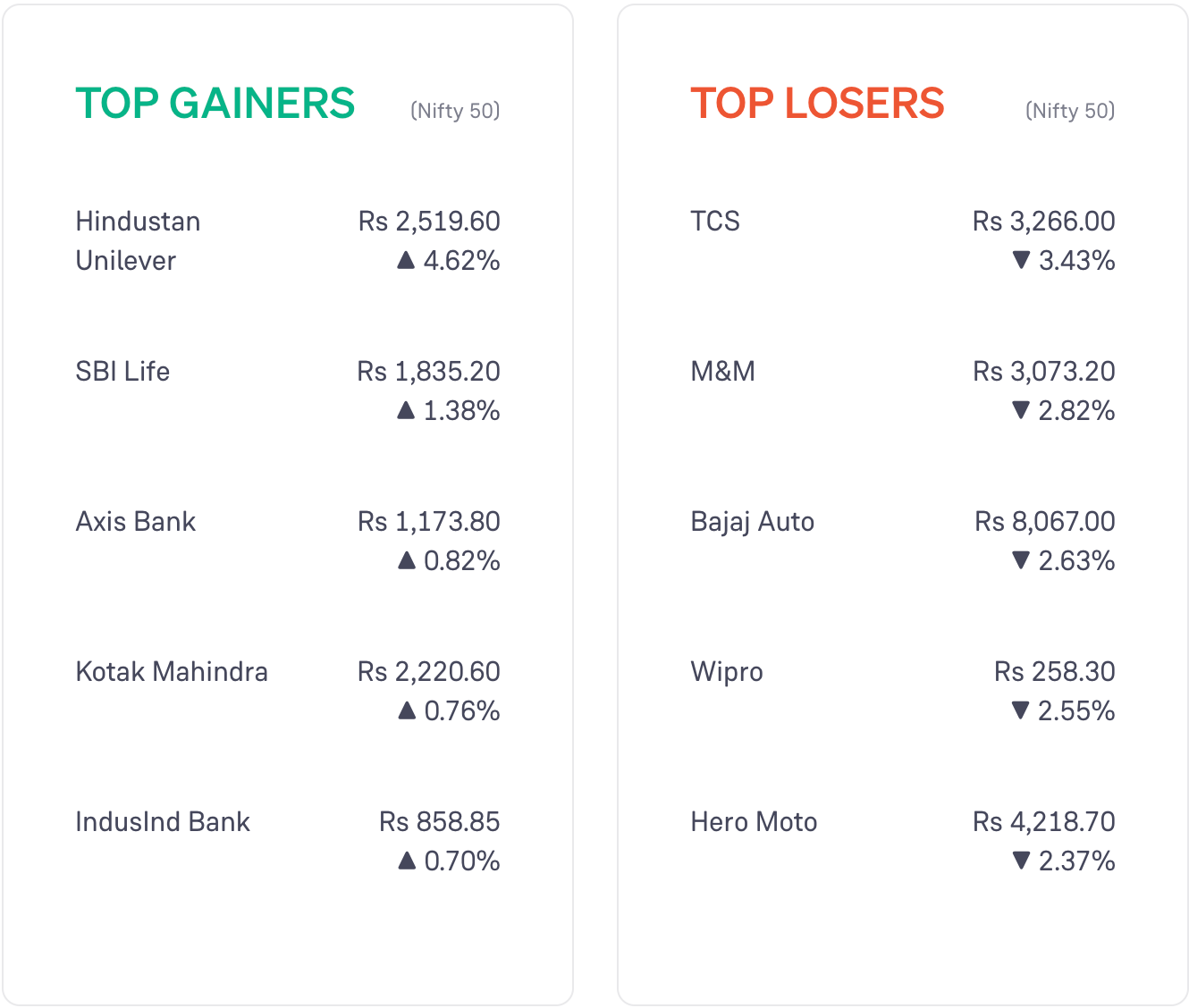Markets opened below yesterday’s closing point.
Nifty 50 fell in the first half of the day and closed in red.
Pharma stocks and FMCG stocks rose the most today. IT stocks and media stocks fell the most.
Global markets: US markets closed in green. European markets fell and Asian markets showed a mixed trend.
News
The central government launched its first-ever e-Truck Incentive Scheme, offering up to Rs 9.6 lakh per vehicle in incentives for electric trucks.
India’s forex reserves fell by $3.04 billion to $699.74 billion in the week that ended on 4 July.
Inox Clean Energy filed a confidential Draft Red Herring Prospectus (DRHP) with SEBI to raise Rs 6,000 crore through an IPO.
The UK’s annual GDP growth rate fell to 0.7% in May, compared with 1.1% in April.
Smartworks Coworking IPO has been subscribed 1.15 times. Retail subscription: 1.18 times. Open for subscription till 14 July.
Stocks Updates
SBI: board will meet on 16 July to consider raising funds through capital bonds for FY 2025-26.
Tata Steel: invested Rs 1,073 crore in its Singapore-based subsidiary, T Steel Holdings Pte Ltd.
Hindustan Unilever: board announced Priya Nair as the new CEO and MD, effective 1 Aug, for a term of 5 years.
Siemens: secured 2 orders worth Rs 773 crore from Maharashtra Metro Rail Corporation to provide advanced signalling and telecommunication technologies for Nagpur Metro Rail.
Word of the Day
Working Capital
It is the money a company keeps to handle its day to day operations and expenses
It can be in the form of cash, bank balance, payments yet to be received, inventory, short-term investments, prepaid expenses, etc.
It is calculated by subtracting current liabilities (such as rent, salaries, raw material dues, etc) from current assets (such as cash, inventory, and money owed by customers,etc).
Working capital = current assets – current liabilities
Positive working capital means the company has enough resources to pay its short-term costs and continue operating smoothly.
If it is negative, the company may struggle to pay its bills and may need to borrow or raise money.
6 Day Course
Theme: Warren Buffett’s checklist
Day 5: Friday
A few other metrics Warren Buffett likes to keep an eye on besides the ones discussed earlier:
Debt-to-equity ratio: Warren does not like companies that have taken big loans.
If there are loans, he likes to see the primary reason for the money borrowed — and how efficiently it is being used.
Free cash flow: he likes analysing the cash flow to see an account of all the money flowing in and out of the company.
Earnings can still be tampered to some extent. This is why looking at the cash flow is so important.
For determining valuation, he prefers to look at the PE ratio, PB ratio, and uses DCF (Discounted Cash Flow) method.
These are only some of the tools used by Warren. There are more such tools used by him.
Featured Question
Q. “If past performance doesn’t guarantee future results, why do we rely so heavily on charts and historical data to invest?”
To get an idea of the possible future.
It does not guarantee anything. But it can give us hints.
A new company exists and it is still trying to figure out its business model.
So it is a loss making company.
Another company has been making good profits for 10 years.
Now, nothing guarantees that the loss-making company will continue making losses.
Maybe it’ll find a good business model and make good profits.
Similarly, the profit making company can lose its advantage to competition and other factors.
But more often than not, the profitable company is more likely to continue having its edge — it is more stable.
By examining greater details of both these companies we can try to make a guess of where these companies might head in the future.
It is similar to how a student with good marks is likely to continue scoring good marks in the future too.
This is an extremely simplified example.
But this is roughly why we look at the past returns. It gives us some idea.
Did you like this edition?
Leave a feedback here!






